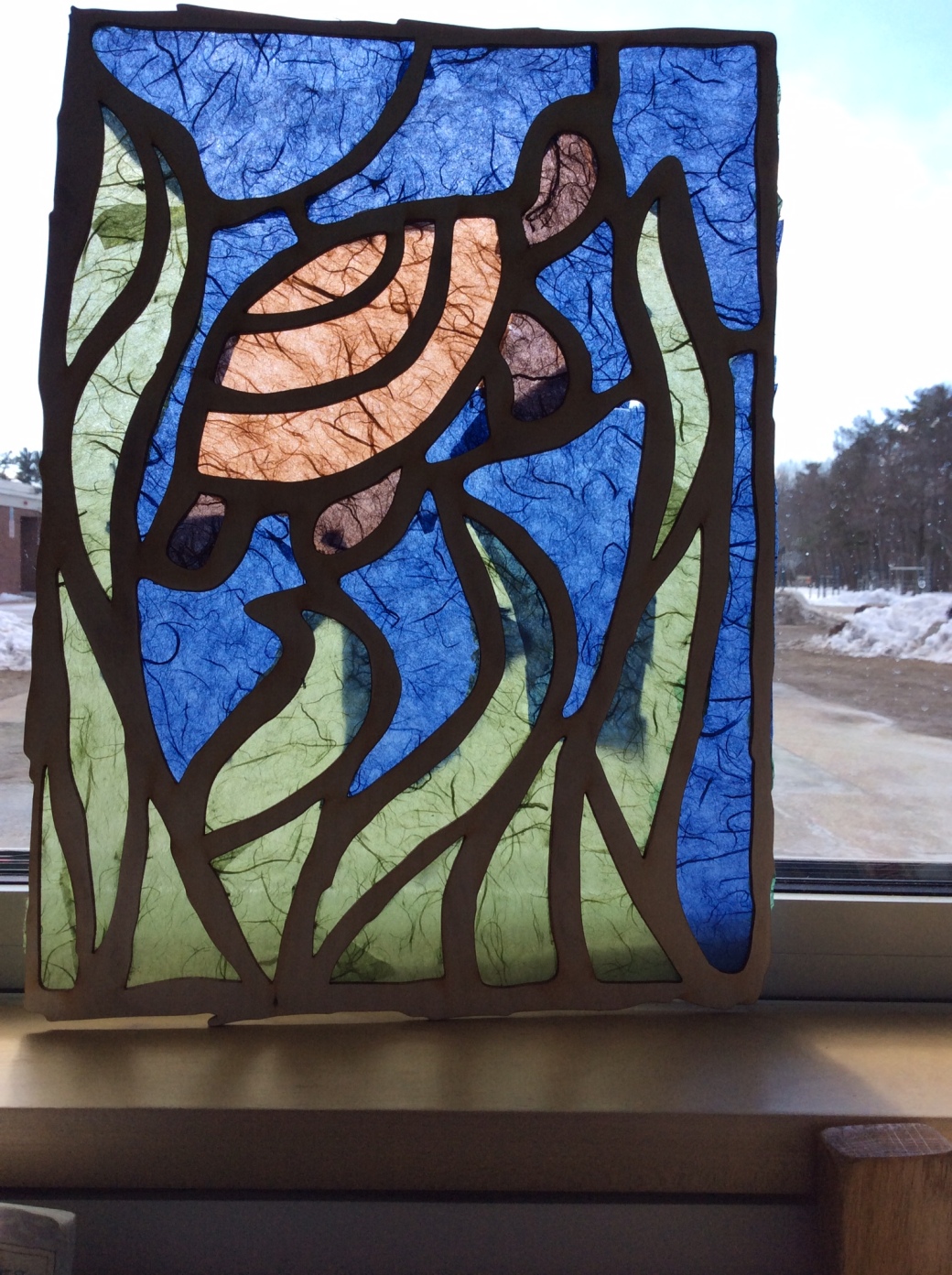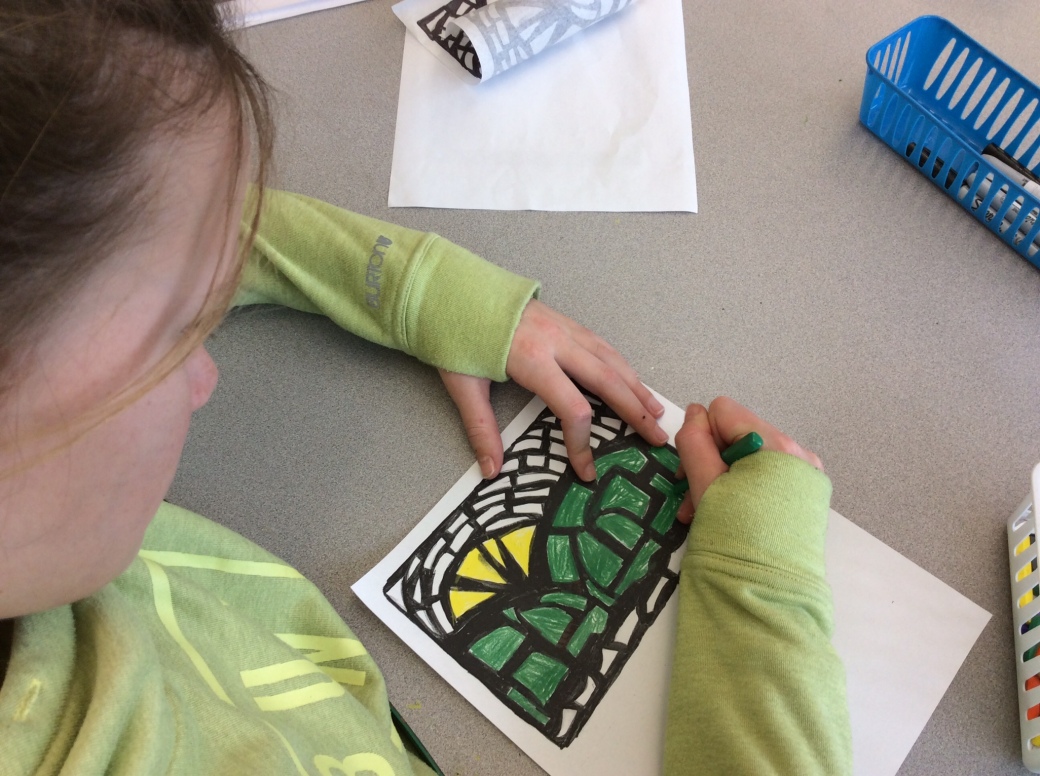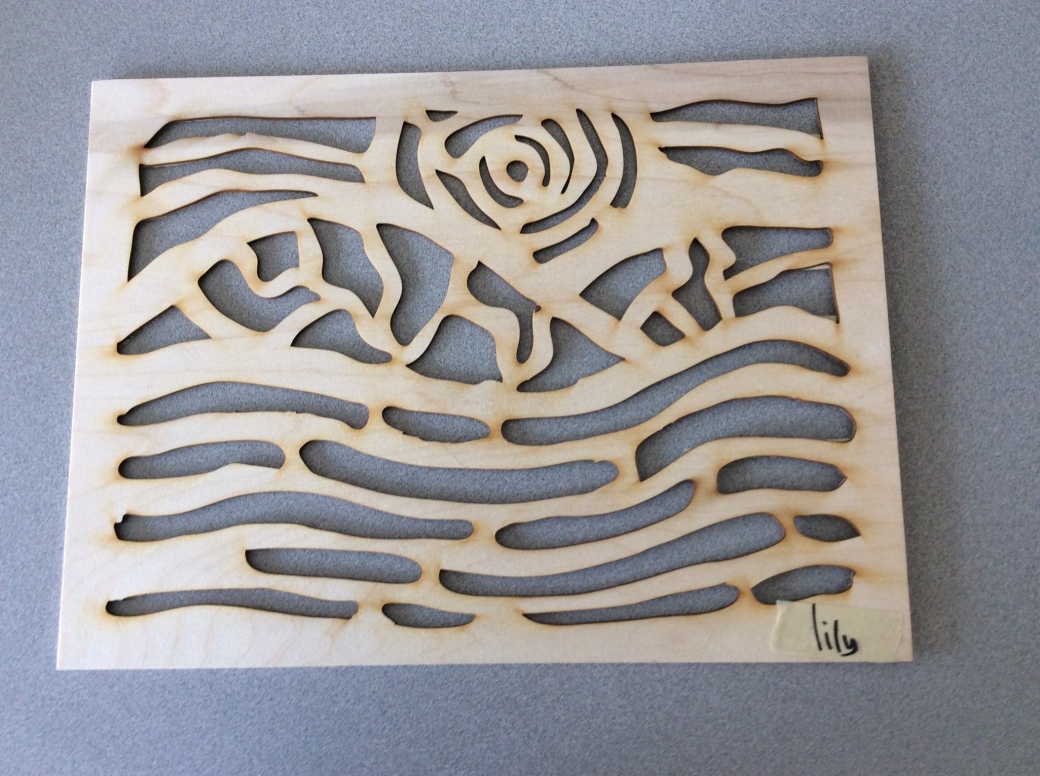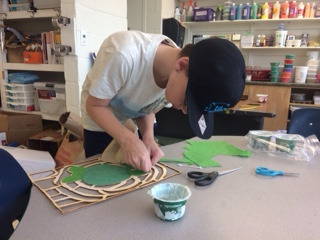Fifth graders find the survey here. Please choose what activity you would like to do next in STEAM.
STEAM Choice Survey
Find the STEAM choice survey here.
Second Grade STEAM Shadow Puppet Play
This project was imagined and planned during a Harvard online maker course that myself and a few other educators at Flynn participated in. The shadow puppet play ended up being a truly collaborative project fusing the concepts and practices of music, science, art, social studies, and language arts. Myself, Emily Willette, our music teacher, Janine Plumer, art teacher and Rebekah Thomas, our EL teacher, all taught separate parts of this project with the final culmination of learning as a shadow puppet play.
The story, ¨The Story of the Talking Vegetables¨ is a northeastern Liberan tale about a spider who refuses to help his villagers with the planting and tending of their crops, and in the end gets accosted by the vegetables when he tries to eat them.
Janine had students create shadow puppets, while Rebekah worked with her EL students on creating a script from the original book. I led investigations about how light interacts with the puppets, and how color can emulate feelings, and Emily worked on the musical score. It was such a pleasure to work with one another in this capacity and the students really enjoyed it. Watch it here.
Student Voice and Choice Survey
As part of my Personalized Learning Planning class, I am having students in fifth grade take the following survey. The reason or goal behind this is to evaluate how often students think they are given choices in school or their voice heard. I would like to see if having increased choice an voice increases engagement.
Sustainability at JJ Flynn Elementary
The following article was written last year in regards to Emma Jenkins and I´s work at Shelburne Farms Education for Sustainable Institute. I am continuing the work we have started in relation to climate change. Read the full paper here: Sustainability at JJ Flynn Elementary

We <3 Circuitry
Over the last few weeks, fourth graders have been doing some inquiry around simple and series circuits. We began with the idea of a complete vs. incomplete circuit and then quickly went into investigations with insulative and conductive materials. I did trick them a bit during this investigation though, I had them test some conductive string to see if it could create a complete circuit. Isn´t technology amazing!
Students then had to create a series circuit and see which colors of lights could be illuminated together. Next, we plan on created illuminated wearables that will be showcased at our Maker Faire on March 20th. Stay tuned!
What are the interactions between species in our watershed?

That was the question we asked students to answer when prompted to draw a picture for their final watershed project in 5th grade. This project occurred last year, but was by far, one of the favorites of teachers, parents and students alike.
It began when I procured a grant from Generator to make this project possible. Joni Pecor, 5th grade teacher, and I, wrote a proposal for the project in connected with their watershed unit. With this generous grant, we were able to bring in Peter Katz, the artist who inspired our mosaics, and whose work at the time was being shown at the Generator. He worked with the entire 5th grade in showing them how he created his nature-themed mosaics.
With that, the students set to work with the help of Janine Plumer, our art teacher. Students created mind maps and then drew pictures that depicted how they would answer the essential question above in a visual form.

They then, turned these drawings into mosaics by ¨chunking¨ the individual parts of the drawings. Many colored them after we scanned them to get a sense of what their mosaic would look like in the end, and to choose the three or four colors they would like.
Once scanned, Janine, myself, Mr. Clarke, our principal, and Generator member, Alex Swaisgood, worked tirelessly on Adobe Illustrator, to make sure each one was neat enough to send to the Generator´s laser cutter. Once there, each mosaic was etched into a piece of baltic birch wood bought from The TreeHouse.

Myself, and Keith Brown, took turns picking up the finished laser cut pieces from Generator and delivering them back to Flynn Elementary. It was then, in STEAM and their homeroom classrooms, the mosaics began to come to life.

Each student measured, cut and glued kite paper to the back of their mosaics. It took a long time and really tested each students patience and endurance.
In the end, the mosaics were displayed at our Maker Faire, the classrooms, and some were entered in World Water Day, which won our entire 5th grade a free trip on the Spirit of Ethan Allen. It was a lot of work, but well worth it for the beauty of the end product. It was also an amazing way to see how so many different facets of people can work together to provide an ¨out of the box¨ hands on, minds on project for students that is connected to their science curriculum.
Did You Know?
Did you know that Flynn and ECHO have been piloting a science professional development outreach program this year? Well, we are and making great progress!
The Leahy Science Center, otherwise known as ECHO, has a newly established goal to provide rich STEM PD to rural communities in Vermont, based on our Next Generation Science standards and practices. Chris Whitaker, STEM coordinator and teacher at ECHO, has been working with our first grade team on their light unit. He uses the model, “I do, We do, You do.” So far, he has brought engaging lessons and materials to Flynn and has helped strengthen our teachers science teaching. We look forward to working with he and his team next year as well!
Stated Choice Activity
After our holiday break, our amazing scientists from EPSCOR, Livia and Janel, visited with a stated choice activity for our fifth grade students. This is an activity that was actually given to Burlington residents to find out what they valued most in terms of our lake and land use. The information, in turn, was used to provide information to lawmakers on big decisions in our area.
Fifth grade has been immersed in their watershed and ecosystems unit for the past few months and this lesson that EPSCOR delivered complemented their learning nicely, and allowed them to share their personal voices and values in thinking about choices we make that impact our lake.
Janel explained that we all have choices in life and sometimes that choices impact our environment. Students had to consider these three choices:
- Land use (forest, city or farm)
- Beach closures
- Fish consumption
Students had rich conversations with one another while engaging in the stated choice activity. What a great activity to do with fifth graders who are just starting to discover their own identities and personal preferences! They had to circle which of the aforementioned choices they preferred and find patterns to see which of the choices they felt most strong about. Some students were passionate about fishing, and keeping the ability to eat the fish out of Lake Champlain; while others, found as vegetarians, preferred keeping our forests large, water clean, and safe for animals.
The following week we revisited the issue of mercury content in fish. Students were full of questions about eating mercury and how it impacted humans, where it came from and if fish from grocery stores had mercury in it and were safe to eat. One student, analyzed the pictures in our State of the Lake pamphlets and came up with the easy explanation that we should eat less large fish than small and found that was true of both ocean and lake fish. This was one of my favorite lessons so far. Thank you EPSCOR!
Biomimicry: Creating Shoes for the Rainforest
One of my very favorite subjects is the concept of biomimicry, or in layman terms, science copying nature to solve problems and design products. First graders recently learned about how science uses the amazing ways of nature both in plants and animals to make products for humans. They used this idea to design shoes, yes shoes.
Watch how science has copied nature here.
The challenge is to design a pair of shoes that mimics an animal’s foot in the rainforest, enabling them to be able to live, and do as that animal does in it’s habitat. Now, will these shoes work as intended? Probably not, but they are prototypes; out of the box ideas for new designs and solutions to problems. Take a peek at the kids working on their shoes below. I will add more photos as they finish their projects.























